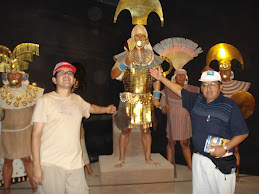
Fuente del texto:
The disembarkation of the Liberating Expedition took place in Paracas bay on September 8th 1820. Jose de San Martin was in charge of it. He established his general quarter in Pisco and he counted with the enthusiast collaboration of the patriots of that place. This happened during the government of Joaquín de la Pezuela, Marquis of Viluma.
THE FIRST ONE IS TO ADMIT THAT WE ARE NOT FREE
The arrival of the Liberating South Current was to obtain the independence of Peru for being the center of the royalist’s power in South America and in this way to ensure the independence of the other countries. The Viceroy, carrying out the rules of Spain, proposed the conference of Miraflores where the representatives of San Martin and Pezuela met.
THE FIRST ONE IS TO ADMIT THAT WE ARE NOT FREE
The arrival of the Liberating South Current was to obtain the independence of Peru for being the center of the royalist’s power in South America and in this way to ensure the independence of the other countries. The Viceroy, carrying out the rules of Spain, proposed the conference of Miraflores where the representatives of San Martin and Pezuela met.
The patriot position was the recognition of the independence. In the other hand, the royalist position was the subjection to the King and the Liberal Constitution of 1812. For being antagonistic positions, the conference didn’t work. After that, on October 5th, San Martin ordered Spaniard Alvarez de Arenales to do the campaign to the center highland, to make an insurrection in that region and established a siege around Lima, with the help of rebels, who were peasants rose in arms.
San Martin decided to move to Huaura on October 26th. Later, he received the news about the capture of the best royalist ship, La Esmeralda, the desertion of the realistic battalion Numancia, to the patriot side, the victory of Cerro de Pasco, obtained by the general Arenales against the royalist forces of the brigadier O’Really, the independence of the intendancy of Trujillo, Guayaquil and the party of Jaen.
According to Francisco Quiroz, San Martin trusted on creole people, or spaniards born in America, he thought that they declared in consensus by the separation, so the problem would be solved soon.
These favorable events to the patriots and the viceroy’s hesitations about the insurgent forces made the royalist band to questions the viceroy’s performance causing the muting of Aznapuquio, a blow state against Pezuela. After that, they chose Jose de la Serna as Viceroy.
TO BE FREE, THE CHANGE HAVE TO START IN THE MIND
The conference in Punchauca was made for command of the constitutional monarchy of Spain. In this opportunity San Martin and La Serna met personally. San Martin asked the recognition of the Peru independence and La Serna asked the submission to the king of Spain.
Besides, San Martin proposed La Serna establish a constitutional monarchy under the authority of a European Prince in Peru. The royalists didn’t accept, because they had the support of the most creole people and they entrusted to the indigenous people wouldn’t do a general insurrection over all under the control of the sanmartiniano army.
After Punchauca conference, the viceroy Jose de la Serna decided to go to Cusco with all his army on July 6th because he thought Lima wasn’t a safe city. It was under that circumstance San Martin decided to enter to Lima on July 10th. Quiroz indicates that San Martin was received by popular jubilation and distrusts of the colonial aristocracy that was forced to assume a liberty attitude because between Lima and the army of La Serna, there were montoneros ready to enter in action. To refuse was the equivalent to agree with its own arrest, confiscation or exile.
TO BE FREE, THE GESTURES ARE IMPORTANT BUT THEY AREN`T ENOUGH
The independence act was signed on July 15th in the chapter of Lima which was presided by the major Isidro de Cortázar y Abarca. It was elaborated by Manuel Pérez Tudela; the independence proclamation was made on July 28th with these words:
"... From this moment on, Peru is free and independent, by the general will of the people and the justice of its cause that God defends. Long live the homeland! Long live freedom! Long live our independence!"
Nevertheless, the real independence of Peru would be obtained just on December 11th in 1824 with the Ayacucho capitulation between the generals Sucre and Canterac. For this reason the royalist army accepted to depose the weapons and leave the territory.














2 comentarios:
Convido-vos a visitar-nos
hay errores en la traduccion.
Publicar un comentario